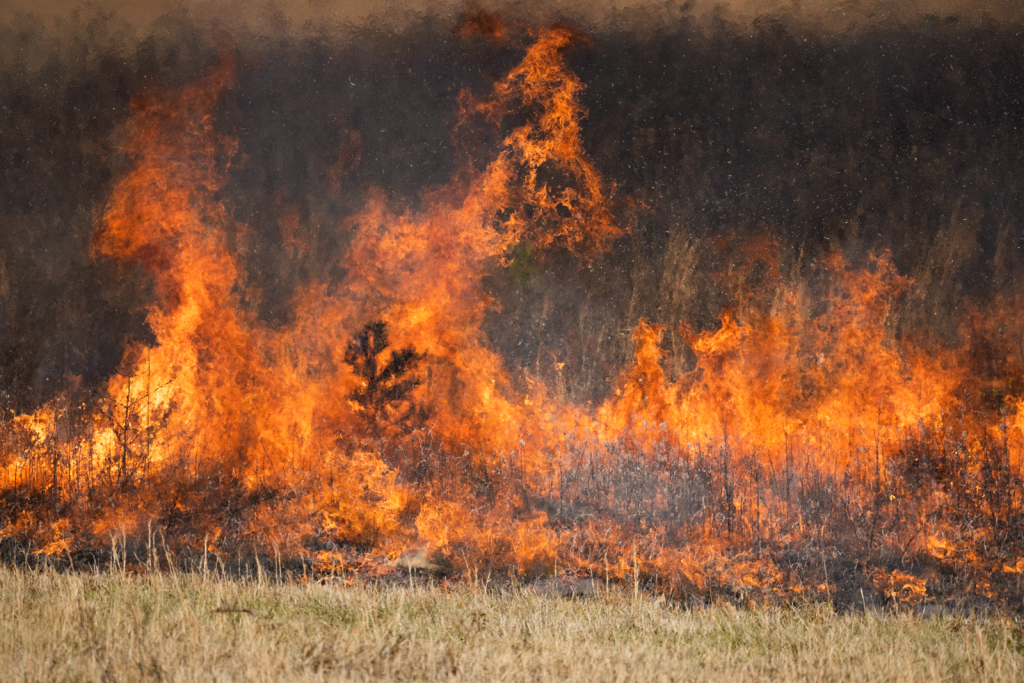How Controlled Burns Can Be Used as a Tool for Maintaining Healthy CRP Land
Prescribed burns, also known as controlled burns, are one of the most effective, natural management tools available for maintaining the health and longevity of Conservation Reserve Program (CRP) plantings. While the thought of intentionally setting fire to land may seem counterintuitive, this practice mimics natural processes that have shaped grassland ecosystems for centuries.
At FDCE, we recognize prescribed burning as a powerful strategy for promoting native plant diversity, controlling invasive species, and rejuvenating CRP habitats. Here’s how it works, and why it’s often recommended as part of a long-term CRP management plan.
Why Prescribed Burns Work
In natural prairie ecosystems, fire played a crucial role in sustaining native plant communities. It cleared away old vegetation, returned nutrients to the soil, and helped native grasses and forbs thrive by suppressing woody encroachment and invasive species.
Today, prescribed burns offer a safe and effective way to replicate these natural benefits under controlled conditions.
Key Benefits of Prescribed Burns in CRP Management
Promotes Native Plant Growth
A controlled fire removes accumulated dead plant material (thatch), allowing sunlight and moisture to reach the soil surface. This encourages the growth of warm-season native grasses and wildflowers; exactly the species most CRP contracts aim to establish.
Suppresses Invasive and Woody Species
Invasive weeds and encroaching woody plants can quickly take over CRP fields if left unchecked. Fire can be more effective than herbicide in controlling certain deep-rooted or herbicide-resistant species, and it selectively favors fire-adapted native plants.
Enhances Plant Diversity
Fire helps stimulate seed germination for many native species, particularly those that evolved in fire-prone ecosystems. Increased diversity translates to better wildlife habitat and improved ecosystem resilience.
Improves Soil Health and Nutrient Cycling
Burning releases nutrients tied up in old plant material back into the soil, improving fertility without the need for synthetic inputs. This supports long-term soil health; one of CRP’s primary conservation goals.
Supports Wildlife Habitat
Many bird species, including quail and pheasants, benefit from the patchy, open structure that results after a burn. By creating a mosaic of plant heights and densities, fire enhances habitat quality for a range of wildlife.
When and How to Use Prescribed Burns
Timing Is Critical
- Early Spring burns (March–April) promote warm-season grasses and help control cool-season invasives like brome or fescue.
- Late Spring or Early Summer burns may be used to suppress woody plants more effectively.
- Fall burns can reduce thatch and prepare a site for future planting.
The specific timing and frequency of burns should be tailored to your site’s goals and vegetation.
Planning and Safety
Prescribed burns should only be carried out with proper planning, permits, and professional oversight. This includes:
- Creating a detailed burn plan
- Establishing firebreaks
- Notifying local fire departments and neighbors
- Monitoring weather conditions and wind
FDCE partners with trained professionals to ensure any burn activities are carried out safely and effectively.
Is Fire Right for Your CRP Field?
Not all CRP fields require prescribed burns, and in some cases, other management practices like mowing or spot-spraying may be more appropriate. However, for landowners looking to enhance biodiversity, control invasives, and maintain the ecological integrity of their fields, fire can be an incredibly powerful tool.
Let FDCE Help You Manage Your CRP Land
With more than 400,000 acres successfully established and managed, FDCE understands the unique needs of CRP projects. Our team can help you determine whether prescribed burning is a suitable option for your site and connect you with the resources needed to execute a safe and effective burn.
Contact us today to learn more about integrating prescribed fire into your CRP management plan.

